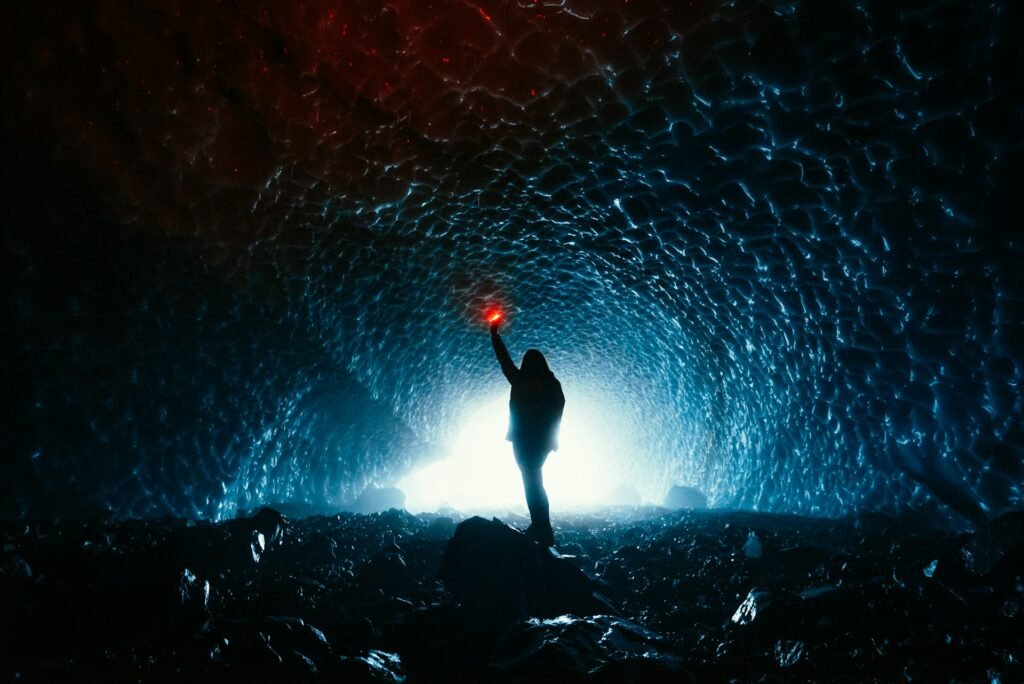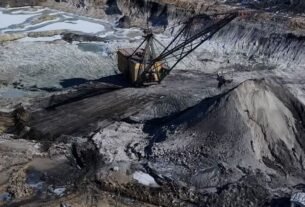
- Empire Metals announced exploration targets of roughly 30 billion tons at 4.5-5% TiO2, representing only 20% of their entire mineral system
- A weathered cap down to 30-40m is enriched in high-value titanium dioxide minerals like rutile and anatase
- The company aims to produce a final TiO2 pigment product on-site through a fully integrated mine-to-product operation
- Empire Metals believes their high-grade, low-cost, low-energy project is well-positioned to fill a scarce supply niche for titanium feedstocks
- The company is focused on accelerating development, obtaining a mineral resource, and demonstrating project economics over the next 6-12 months
Junior mining company Empire Metals (LON:EEE) has unveiled a potentially game-changing titanium project in Australia. In a recent interview, Managing Director Shaun Bunn shared details of their Pitfield project’s immense scale, high grades, and plans to become a low-cost, vertically integrated supplier to the titanium pigment industry. With demand for high-quality titanium feedstocks growing and supply tightening, Empire believes Pitfield is well-positioned for development.
Immense Scale Exploration Targets
While the Pitfield project’s exploration targets are not yet mineral resources, they point to an exceptionally large potential deposit.
“What we put out this morning was an announcement that said we had close to 30, roughly 30 billion tons at 4.5 to 5% TiO2,” explained Bunn. “That represents about now just under 20% of our entire mineral system.”
The total endowment could represent 1.5 billion tons of contained TiO2 – equivalent to 150 years of current annual global TiO2 consumption.
Interview with Shaun Bunn, Managing Director
High-Grade Weathered Cap
Pitfield hosts an unusual surface-enriched zone.
“We found that we had this strongly weathered cap across the entire orebody that, now down to 30-40m, is enriched in titanium dioxide minerals – rutile, anatase,” noted Bunn. “These are highly valued titanium dioxide minerals, generally run about 95% or better TiO2 naturally, and these are scarce.”
This weathered material alone totals 4.5 billion tons across the two exploration targets. Grades of 4.5-5.5% TiO2 compare very favorably to typical mineral sand deposits at around 1%.
Fully Integrated Production Plans
Empire is studying options for on-site pigment production.
“This is a fully integrated mine-to-final-product processing option that we’re looking at – no concentrates, no intermediates, no shipping something that’s a third of the real value across the oceans,” said Bunn. “We’re going to make the final product on site.”
A scoping study will assess the economics, factoring in consumables sourcing, energy, and workforce. But Empire believes the weathered cap provides a unique opportunity to jump straight to producing a high-value, final titanium product.
Filling a Market Niche
The company sees Pitfield as an ideal future supplier of high-grade feedstocks for chloride pigment producers. Bunn highlighted the cost, energy and emissions advantages of their model compared to upgrading ilmenite, producing synthetic rutile, or smelting hard rock ores.
“These guys need high-value feedstock,” explained Bunn. “Pitfield is the answer. We are focused on making that material out of this mix of non-refractory low-impurity ores.” “So a unique opportunity for us to come into the market over the next few years – high-value, low-cost, low-energy, low CO2 footprint products.”
Next Steps and Timing
Empire aims to advance Pitfield rapidly in the next 6-12 months. Key milestones include delivering a JORC-compliant mineral resource and demonstrating viable mineral processing.
“One of the things we can accelerate now with great confidence is to move to a mineral resource statement,” said Bunn.
Metallurgical test work and process design are also critical. “Everything’s going towards unravelling that bit of the puzzle,” he added. The goal is to show Pitfield can produce a final pigment product and be a long-term supplier to the industry.
Empire Metals’ Pitfield titanium project represents a potential Tier 1 discovery with the scale and grades to support a multi-generational, low-cost operation. The company’s integrated on-site pigment production plans offer a differentiated model targeting high-value products and markets. With demand for high-grade titanium feedstocks growing and a weathered cap providing early ore supply, Empire aims to fast-track development and demonstrate a viable path to production. Upcoming mineral resource estimates and metallurgical results are key catalysts to watch as this story unfolds. While still an early-stage project, Pitfield’s immense size, high grades, and vertical integration potential make it a rare strategic asset in the titanium space.
The Investment Thesis for Empire Metals
- Exposure to an exceptionally large, high-grade titanium project with a 150-year potential supply
- Fully integrated model targeting production of final pigment, maximising margins
- Unique weathered cap provides an early, low-cost ore source and a faster route to production
- Positioned to provide scarce high-grade feedstock to the growing chloride pigment sector
- Experienced team rapidly de-risking the asset with near-term catalysts approaching
Macro Thematic Analysis
The global titanium dioxide pigment market, valued at over US$15 billion, is expected to grow steadily, driven by demand from coatings, plastics, and other sectors. Urbanisation, rising incomes, and growing middle classes in emerging markets underpin long-term TiO2 demand growth. At the same time, supplies of high-grade titanium feedstocks like rutile are scarce, with few new discoveries in recent decades.
This supply gap focuses on projects that can deliver high-quality titanium raw materials. In a tightening market, pigment producers seek to lock in long-term supplies, especially for chloride pigment processes requiring high-grade feedstocks. With pressure to reduce costs and emissions, the industry is also seeking alternatives to upgrading ilmenite or producing synthetic rutile, which are energy-intensive.
As Managing Director Shaun Bunn highlights, “The chloride producers who make the high-grade titanium pigments require feedstock like synthetic rutile, 80-90% TiO2. They require rutile itself. They require high-grade ilmenites. These are scarce and becoming scarcer. So these guys need high-value feedstock. Pitfield is the answer.”
Pitfield’s scale, grade, and unique geology make it a potentially strategic asset. If Empire can prove up a large high-grade resource and demonstrate an economic processing route, the project would be well-positioned to fill a looming supply gap. Empire’s plans for a fully integrated operation producing final pigment could also enable it to capture more value and insulate it from raw material price volatility. For investors, this creates exposure to a large-scale titanium development story targeting a high-value niche in the market.




